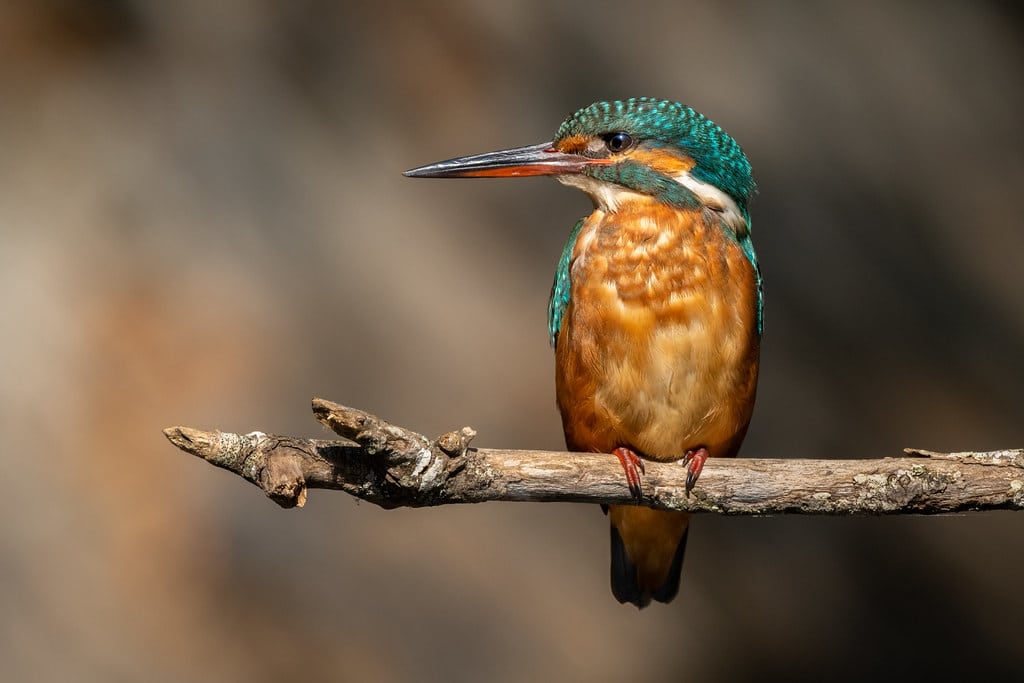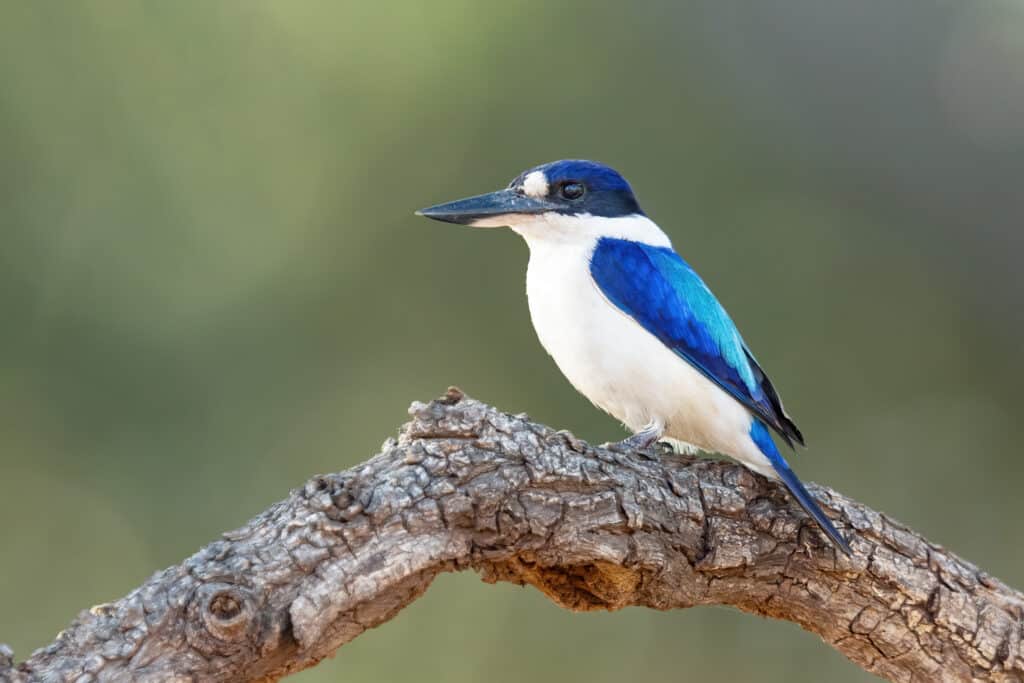The Common Kingfisher (Alcedo atthis), often referred to as the “king of fishers,” is one of the most iconic and beloved bird species in the United Kingdom. Known for its striking plumage, remarkable hunting prowess, and vibrant appearance, the kingfisher holds a special place in the hearts of birdwatchers and nature enthusiasts across the UK. In this article, we will explore the world of the Common Kingfisher from a UK perspective, delving into its history, habitat, behaviour, appearance, and the conservation efforts aimed at safeguarding this jewel of British waterways.
Historical Perspective
The Common Kingfisher has a rich historical presence in the UK, dating back centuries. These charismatic birds have been depicted in various forms of art, literature, and folklore, often symbolising beauty and vitality. In medieval times, kingfishers were believed to have magical properties, and their feathers were even used in royal regalia.
Despite their historical significance, Common Kingfishers faced various challenges over the years, including habitat degradation and persecution. By the mid-20th century, their populations had declined significantly, primarily due to polluted waterways and loss of nesting sites.
Distribution and Habitat
Common Kingfishers are widely distributed across the UK, inhabiting a variety of aquatic environments, from rivers and streams to lakes, ponds, and coastal estuaries. They are most commonly found in freshwater habitats with clear, slow-moving water and abundant fish populations, which are essential for their survival.
One of the key factors determining the distribution of kingfishers is the availability of suitable nesting sites. They excavate nesting burrows in earthen banks along water bodies, which provide shelter and protection for their eggs and chicks. Consequently, kingfishers can be found near water bodies with suitable banks for nesting.
Appearance
The striking appearance of the Common Kingfisher is a major source of its appeal to bird enthusiasts and nature lovers. This species is a true gem of British wildlife, showcasing the following distinctive features:
- Vibrant Plumage: Common Kingfishers exhibit iridescent, jewel-like plumage that shimmers in various shades of blue and green. Their upperparts, including the back and wings, are a vibrant azure blue, while the underparts are a paler orange-rust colour.
- Distinctive Markings: These small birds have a distinctive black eyestripe that runs across their eyes, which contrasts beautifully with the white patch just below it. Their bill is long, straight, and sharp, perfectly adapted for catching fish.
- Short Tail: Kingfishers have a relatively short tail, which is typical of birds adapted to a life of rapid aerial manoeuvres and diving.
- Size and Shape: They are compact birds, measuring around 16 to 18 centimetres (6 to 7 inches) in length, with a wingspan of 24 to 26 centimetres (9 to 10 inches). Their stocky build and short legs make them well-suited for their hunting techniques.
- Sexual Dimorphism: In Common Kingfishers, sexual dimorphism is minimal, with males and females looking nearly identical. However, in some cases, males may exhibit slightly brighter plumage.

Diversity of Kingfisher Species
While the Common Kingfisher (Alcedo atthis) is perhaps the most well-known kingfisher species in the United Kingdom, the world is home to a remarkable diversity of kingfishers, each with its unique characteristics and habitats. Here, we’ll briefly introduce you to a few of these fascinating species:
1. Belted Kingfisher (Megaceryle alcyon): Found in North America, the Belted Kingfisher is known for its distinctive blue-grey plumage and a bold, shaggy crest on its head. Unlike the Common Kingfisher, it exhibits sexual dimorphism, with females having a rusty-brown band across their chest. Belted Kingfishers are primarily freshwater hunters, often seen perched on branches overhanging rivers and lakes.
2. Kookaburra (Dacelo spp.): Native to Australia and New Guinea, kookaburras are large and robust kingfishers known for their unmistakable call, which sounds like uproarious laughter. The Laughing Kookaburra (Dacelo novaeguineae) is the most well-known species and is recognised by its white head and body with a distinctive brown eye stripe.
3. Malachite Kingfisher (Corythornis cristatus): Found in sub-Saharan Africa, the Malachite Kingfisher is a tiny and brilliantly coloured species, showcasing emerald-green plumage, bright orange beak, and striking black markings. Despite its diminutive size, it’s an expert fisher, often perching near water to hunt for small fish and aquatic insects.
4. Sacred Kingfisher (Todiramphus sanctus): Native to Australia, New Zealand, and nearby islands, the Sacred Kingfisher is named for its significance in indigenous cultures. It has a striking turquoise-blue back and wings, with a white underside and distinctive black eye markings. These kingfishers are commonly seen in woodlands and urban areas.
5. Collared Kingfisher (Todiramphus chloris): The Collared Kingfisher is distributed across a wide range, including Asia, Australia, and the Pacific Islands. It sports a brilliant blue-and-white plumage, and its call is a common sound in many coastal regions. Collared Kingfishers adapt well to various habitats, from mangroves to urban environments.
6. Pied Kingfisher (Ceryle rudis): Native to parts of Africa and Asia, the Pied Kingfisher is known for its distinctive black-and-white plumage, which sets it apart from other kingfishers. It’s often seen hovering over water before plunging down to catch fish with remarkable precision.
7. Forest Kingfisher (Todiramphus macleayii): This species is native to northern Australia and is known for its vibrant blue-green plumage. Forest Kingfishers inhabit a variety of habitats, including woodlands and forests, where they hunt for insects and small vertebrates.
These are just a few examples of the diverse and captivating world of kingfisher species around the globe. Each species has evolved to thrive in its unique environment, showcasing a remarkable array of colours, behaviours, and adaptations. Whether they’re perched on branches overlooking a tranquil river or diving into the water with lightning speed, kingfishers are a testament to the incredible diversity of life in our natural world.

Behaviour and Diet
The Common Kingfisher is renowned for its spectacular hunting technique. These birds are known for their breathtaking, high-speed dives into the water to catch fish, their primary prey. Equipped with sharp beaks and keen eyesight, kingfishers can spot fish beneath the water’s surface even in low light conditions.
Kingfishers are predominantly solitary birds and maintain exclusive territories along watercourses. They are highly territorial and will defend their hunting grounds fiercely from intruders, including other kingfishers. Their territoriality is especially evident during the breeding season when competition for mates and resources is intense.

Reproduction and Life Cycle
Common Kingfishers breed from late March to early August. During this time, pairs engage in elaborate courtship displays, which include aerial acrobatics and the exchange of fish as a gift. Once a pair forms a bond, they work together to excavate a nesting burrow in a suitable riverbank.
Females lay a clutch of eggs, usually between five to seven, and incubate them for about three weeks. During this period, the male provides food for the female, ensuring her well-being. After hatching, the chicks are fed a diet of small fish and aquatic invertebrates, regurgitated by both parents. The chicks fledge at around 24 to 27 days of age and are gradually weaned off their parents’ care.
Conservation Efforts
Common Kingfishers are now a protected species in the UK under the Wildlife and Countryside Act 1981. This legal protection makes it illegal to harm, disturb, or intentionally take them, their nests, or their eggs.
Efforts to conserve Common Kingfishers in the UK primarily focus on habitat restoration and pollution control:
- Habitat Restoration: Conservationists work to restore and protect the aquatic habitats that kingfishers rely on. This includes maintaining suitable nesting sites by stabilising riverbanks and creating artificial nest banks when necessary.
- Pollution Control: Water quality is crucial for the survival of kingfishers. Efforts to reduce water pollution, such as stricter regulations on industrial and agricultural runoff, help ensure that their prey fish remain abundant and healthy.
Success Stories
One of the most heartening success stories of Common Kingfisher conservation in the UK comes from the partnership between conservation organisations and local communities. Many dedicated individuals and groups have been involved in creating and maintaining artificial nesting sites, often by installing kingfisher nest boxes along waterways.
In some regions, these efforts have led to increased kingfisher populations, showcasing how community engagement and habitat management can make a significant difference in species conservation.
Challenges and Threats
While there have been positive strides in kingfisher conservation, several challenges and threats persist:
- Habitat Loss: Ongoing urbanisation and land development can lead to the destruction of natural watercourses and nesting sites, reducing available habitat for kingfishers.
- Climate Change: Climate-related changes, such as altered weather patterns and rising temperatures, can affect the availability of prey species and disrupt the kingfisher’s hunting patterns.
- Invasive Species: Invasive non-native species, particularly signal crayfish, can disrupt aquatic ecosystems and compete with native fish, potentially reducing the kingfisher’s prey base.
- Pollution: Despite efforts to control pollution, water quality remains a concern. Pesticides, heavy metals, and other contaminants can accumulate in fish and impact the kingfisher’s health.
Future Prospects
The future of Common Kingfishers in the UK is hopeful, thanks to concerted conservation efforts and growing public awareness of their importance. The legal protections in place and the dedication of conservationists have contributed to stabilising and even increasing populations in certain areas.
To ensure the long-term survival of Common Kingfishers, continued habitat restoration, water quality management, and community engagement are essential. Furthermore, research into the effects of climate change and strategies to mitigate its impacts on kingfishers will be crucial.
As more people appreciate the beauty and significance of these remarkable birds, the kingfisher’s place as the jewel of British waterways will remain secure, reminding us of the delicate balance of nature and the importance of preserving our unique and cherished wildlife.
Sam loves to learn about animals and their habitats. He has been a nature lover from a very young age, and has been writing papers and articles about wildlife for as long as he can remember.
